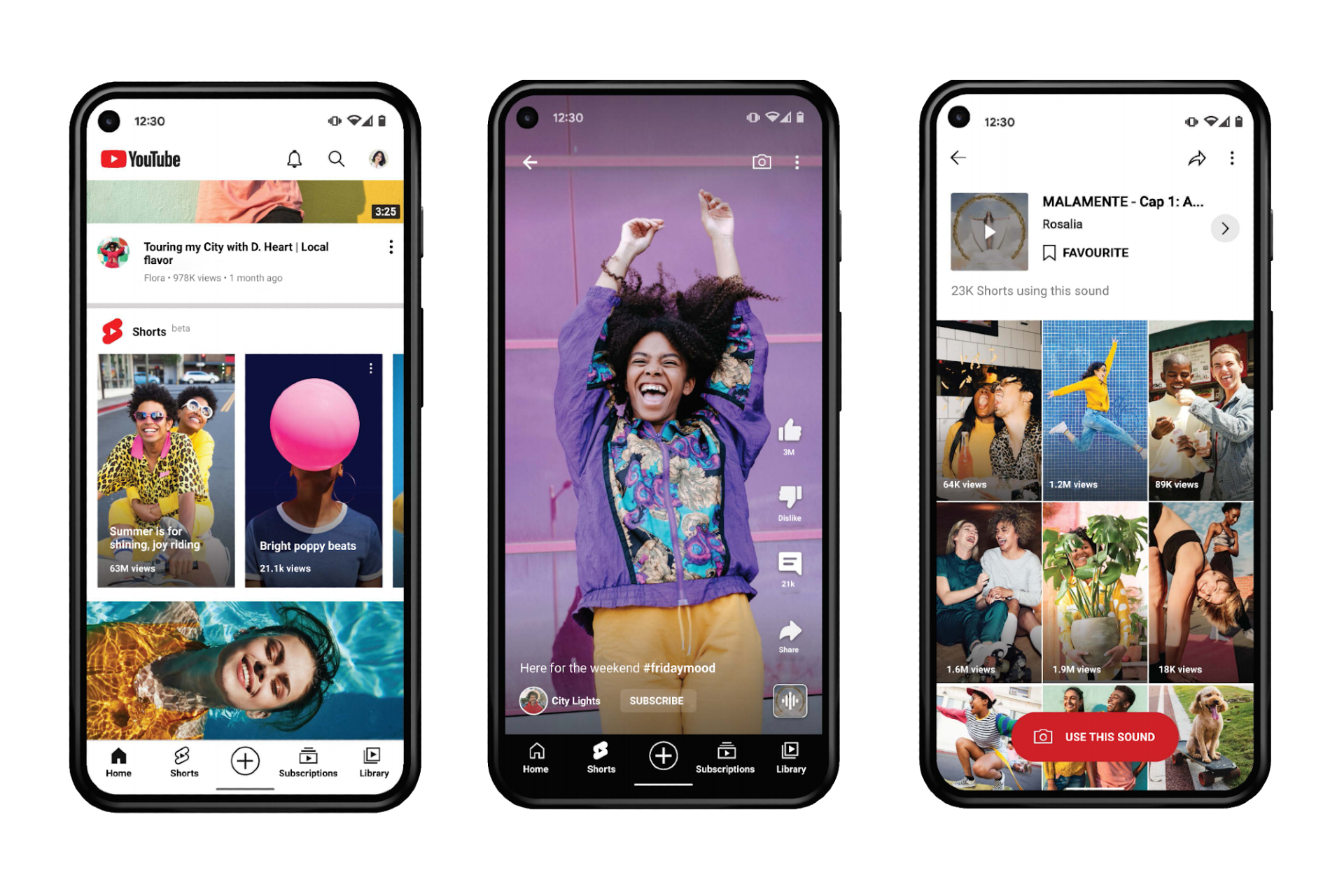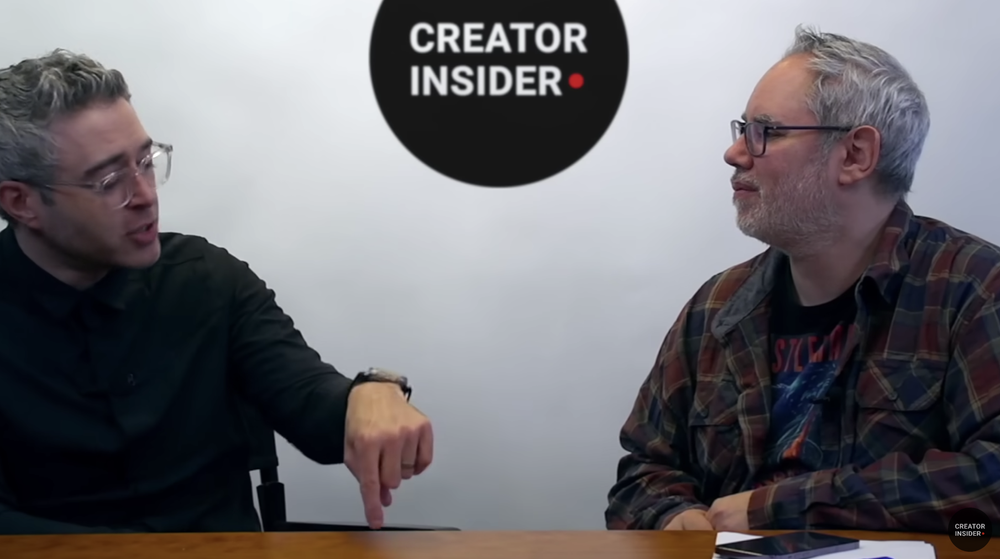YouTube Shorts made their debut in September 2020, stepping into the spotlight as a response to the booming popularity of short-form video content, particularly inspired by TikTok. This feature allows users to create and share videos that are 60 seconds or less, offering a fresh platform for creativity, entertainment, and information sharing. With its integration into the existing YouTube ecosystem, Shorts aims to cater to both content creators and viewers looking for quick, engaging bites of entertainment. It's not just a new format; it's part of a larger shift in how we consume media and interact with one another online.
The Rise of Short-Form Video Content

Short-form video content has surged in popularity over the past few years, reshaping how creators and consumers engage with digital media. Several factors contribute to this trend:
- Attention Span: In our fast-paced world, many viewers favor bite-sized content that delivers quick gratification. With longer videos requiring more time and commitment, short videos cater perfectly to our dwindling attention spans.
- Accessibility: Creating a short video is less daunting than producing a full-length feature. This has opened the floodgates for budding creators who might find lengthy content intimidating.
- Social Media Integration: Platforms like TikTok and Instagram have laid the groundwork for the short-form video craze, influencing YouTube to join the bandwagon and capture a slice of this engaging content format.
- Viral Potential: Short videos can spread rapidly, thanks to their shareable nature. A creative or funny clip can go viral overnight, offering creators widespread exposure.
As content consumption patterns evolve, platforms like YouTube Shorts capitalize on this shift, allowing creators to experiment with quick storytelling, clever editing, and eye-catching visuals. This rise of short-form content reflects a broader transformation in media, where engagement, creativity, and immediacy reign supreme. It’s an exciting time to be a part of this ever-evolving landscape!
Also Read This: Unprivate Your Projects on Behance for Public Viewing
3. Criticism of YouTube Shorts

YouTube Shorts has been a hot topic of discussion since its launch. While it aims to provide a new platform for short, engaging videos, several criticisms have emerged that cannot be ignored.
First and foremost, one major criticism revolves around the *lack of originality. Many users argue that Shorts often promote repetitive content, where trends cycle quickly and creators feel pressured to follow suit rather than produce unique, innovative pieces. This leads to a homogenization of content, making it challenging for smaller creators to stand out.
Another common concern is the impact on narrative storytelling. The essence of video storytelling, we often find, is pulled apart when creators are forced to condense their ideas into 60 seconds or less. Viewers crave depth and context, and many feel that Shorts oversimplifies complex topics.
- Short Attention Span: As impressive as short-form content is, it can condition viewers to expect quick hits rather than in-depth narratives.
- Algorithmic Prioritization: Some users complain that the YouTube algorithm favors Shorts, often leading full-length videos to suffer as creators chase the Shorts trend.
- Monetization Issues: Unlike traditional videos, monetizing Shorts can be challenging, leaving many creators feeling undervalued for their work.
Lastly, while the platform aims for inclusivity, many creators feel that Shorts serve as a double-edged sword; they're an opportunity, but they also create a battleground for virality that favors quantity over quality. As a result, YouTube Shorts faces a steep hill to climb in addressing these criticisms effectively.
Also Read This: Increasing Discoverability on Shutterstock: Tips for Maximizing Exposure
4. Impact on Creators and Content Quality
The introduction of YouTube Shorts has undeniably transformed the landscape for creators, but not always for the better. There's a delicate balance between harnessing the potential of short-form content and maintaining the integrity and quality that platforms like YouTube were initially built upon.
For many creators, the pressure to produce frequent, short videos can lead to burnout. With trends changing at a lightning pace, staying relevant often means prioritizing speed over content quality, which can diminish the overall originality and creativity inherent in many channels. Here are a few ways this has affected creators:
- Increased Competition: As Shorts gain popularity, more creators are flooding the platform, making it harder for individual channels to gain traction.
- Shift in Content Strategy: Creators may feel forced to pivot their content styles, often sacrificing their unique voice for trendy sounds and formats.
- Community Engagement:* Short-form content may not foster the same sense of community and engagement that long-form content traditionally has.
As for content quality, there’s no denying that the emphasis on quick consumption has diluted the richness of some channels. The debate continues on whether short-form content can coexist with the thoughtfully crafted videos that audiences have come to love.
Many viewers find themselves at a crossroads as well, torn between the entertainment of Shorts and the more thoughtful content they previously enjoyed. The long-term impacts on audience preferences and creator strategies will undoubtedly unfold as YouTube and its creators navigate this multifaceted landscape.
Also Read This: Saving Cricut Designs as Images
Algorithm Challenges and Discovery Issues
YouTube Shorts have been a hot topic of conversation, not just for their engaging content but also for the algorithm that drives them. One of the most significant criticisms revolves around how the platform's algorithm works, particularly in the realms of content discovery and personalization. Many users feel that the algorithm prioritizes sensational and trending content over more niche or high-quality videos, leading to a homogenization of what gets featured.
For content creators, this presents several challenges:
- Competition for Visibility: As shorts become increasingly popular, the competition to get noticed has become fierce. Creators find themselves in a constant struggle to keep up with trends, which may dilute their unique voice and creativity.
- Inconsistent Performance: Many creators report that their videos perform exceptionally well one day and poorly the next. This inconsistency can be frustrating, as it seems arbitrary and often leaves creators guessing about what the algorithm favors.
- Lack of Niche Focus: The algorithm tends to push widely appealing content, which can sideline creators focusing on niche topics. This can stifle diversity on the platform, making it harder for specialized content to flourish.
Moreover, the issue of discovery affects the viewing experience of users, as the shorts they receive in their feed may not always align with their interests. Instead of recommending videos based on past behavior, the algorithm sometimes leans heavily on what's popular at the moment, which can lead to a less personalized user experience.
Also Read This: Here Is Your Ultimate Guide to Download Facebook Reel Video
User Experience and Engagement Concerns
The user experience on YouTube Shorts has been the center of numerous dialogues, particularly regarding engagement levels and overall satisfaction. While the format of Shorts—snappy, engaging, and easily digestible—aims to cater to the modern viewer's short attention span, it does come with its own set of concerns.
Some of the primary concerns include:
- Content Overload: The rapid-fire nature of Shorts can sometimes overwhelm viewers. With incessant streams of content, users may find it challenging to enjoy and fully engage with individual videos.
- Viewer Fatigue: The constant barrage of new content might lead to viewer fatigue, where audiences become desensitized to the novelty of Shorts. This phenomenon can reduce overall engagement as users skip through videos more quickly.
- Quality vs. Quantity: The pressure to produce short, engaging content may lead many creators to prioritize quantity over quality. This can result in users sifting through a lot of low-quality videos to find content that genuinely resonates with them.
Furthermore, the interface itself has elicited mixed feedback. Some users find navigating between shorts and regular content confusing. This inconsistency can disrupt the user experience and make it harder for viewers to switch between different types of content seamlessly.
In conclusion, while YouTube Shorts open up exciting avenues for engagement and creativity, addressing these algorithm challenges and user experience concerns is crucial for the platform's long-term success and user retention.
Also Read This: How to Copy an Image in a PDF for Editing or Sharing
7. Industry Reactions and Comparisons to Competitors
When it comes to YouTube Shorts, the reactions from the industry have been a mixed bag of excitement and skepticism. On one hand, creators are intrigued by the potential for reaching a fresh audience through short videos. On the other hand, some industry veterans argue that this format may dilute the quality of content that YouTube is known for. The short form seems to invite a rapid-fire style of content creation that prioritizes engagement over substance, which raises eyebrows among those who value storytelling and depth.
Competitors like TikTok and Instagram Reels have undoubtedly set a high bar in the realm of short-form video. In fact, many creators find themselves comparing the user experience across these platforms:
| Feature | YouTube Shorts | TikTok | Instagram Reels |
|---|---|---|---|
| Length of Video | Up to 60 seconds | Up to 3 minutes (longer for select users) | Up to 60 seconds |
| Music Selection | Vast library from YouTube | Trending sound bites and music | Access to a diverse music catalog |
| Monetization | Shorts Fund (temporary) | Direct monetization options | In-stream video ads |
As content creators weigh their options, they seem torn between diving into Shorts and sticking to longer, traditional YouTube videos. Will YouTube Shorts find a niche, or will they merely serve as a short-lived trend? The industry certainly has its eyes peeled.
8. Conclusion: The Future of YouTube Shorts
As we glance toward the horizon, the future of YouTube Shorts remains a canvas yet to be painted. The platform has massive potential, but it also faces significant hurdles. One of the primary concerns is how to maintain the integrity of its original content model while embracing this new wave of short-form video. Will they strike the right balance between entertaining viral content and informative, well-crafted videos?
Moreover, as more creators experiment with Shorts, we’ll likely see the evolution of storytelling condensed into bite-sized pieces. Interested in some predictions? Here are a few possibilities for the future of YouTube Shorts:
- Innovative Monetization: YouTube will likely enhance its monetization strategies for Shorts, making it more appealing for creators to shift focus.
- Enhanced Editing Tools: The platform may introduce advanced editing features that rival those on TikTok to make content creation easier and more fun.
- Integration with Live Content: We might see cross-ups between Shorts and live videos, offering creators unique ways to engage with their audience.
In conclusion, YouTube Shorts has already made waves in the digital landscape but will it ride the tide of sustainable growth? Only time will tell if it can stand toe to toe with competitors while staying true to the essence of what makes YouTube so special. For now, it’s just a waiting game to see where it goes next!
 admin
admin








